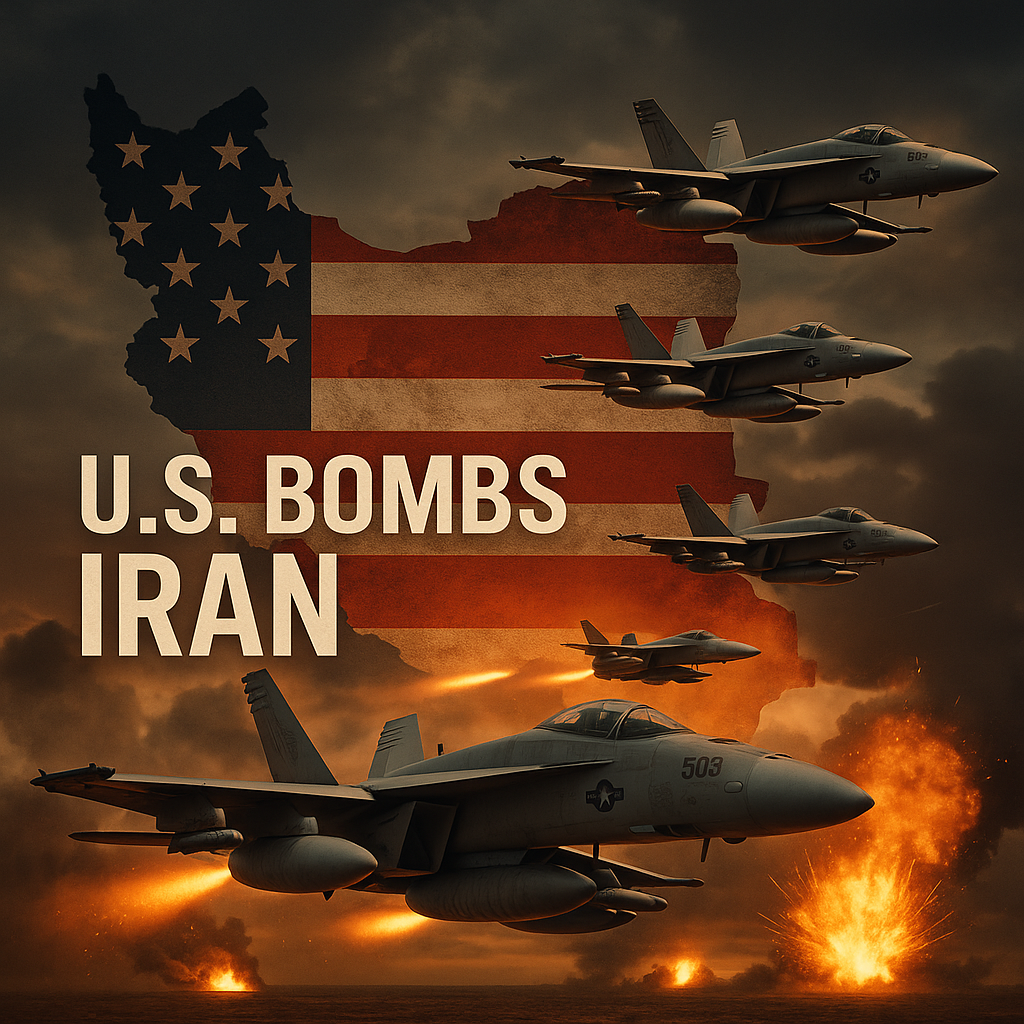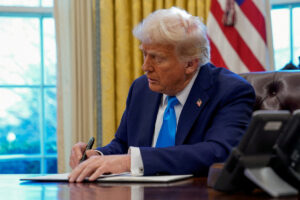June 22, 2025 – In a significant escalation of the ongoing Iran–Israel conflict, the United States launched Operation Midnight Hammer, targeting three Iranian nuclear sites—Fordow, Natanz, and Isfahan—using a combination of B-2 Spirit stealth bombers equipped with 14 GBU‑57A/B Massive Ordnance Penetrators and a barrage of Tomahawk cruise missiles fired from naval vessels.
The operation began around 02:30 a.m. Tehran time (23:00 UTC on June 21), marking the first direct U.S. military involvement in the Iran–Israel war that escalated after Israeli airstrikes commenced on June 13.
Targets struck: Fordow Uranium Enrichment Plant, Natanz Nuclear Facility, and Isfahan Nuclear Technology Center.
Weapons used: Included B-2 bomber-delivered bunker-buster bombs and submarine-launched Tomahawks.
U.S. Statement: President Trump described the mission as a “spectacular military success,” saying all aircraft exited without incident and the nuclear infrastructure was “obliterated.”
Iran’s Response
- Iran’s official statements dismissed the damage as “superficial,” with no irreversible harm and no casualties reported.
- In retaliation, Iran launched ballistic missiles at Al Udeid Air Base in Qatar, though no casualties were reported.
Global & Political Repercussions
- Domestic U.S. reaction: Congressional Republicans largely supported the strikes, while Democrats and some Republicans raised concerns over bypassing Congressional war powers. A War Powers Resolution vote is anticipated soon.
- International response:
- Russia warned the strikes could open a “Pandora’s box” and precipitate nuclear escalation.
- The U.N., EU, China, among others, urged restraint and diplomatic engagement.
- Energy markets: Global oil prices spiked over 10% amid fears of disruption in the Strait of Hormuz.
What Happens Next
- U.S. Congress is set to debate the legality and future scope of military engagement via a War Powers Resolution.
- President Trump is expected to address the nation, shaping whether diplomacy or further force will define the next phase.
- Iran’s response may include increasing pressure on U.S. forces in the region, maritime interventions, or escalations via proxy groups—a volatile situation that global observers are watching closely.


















